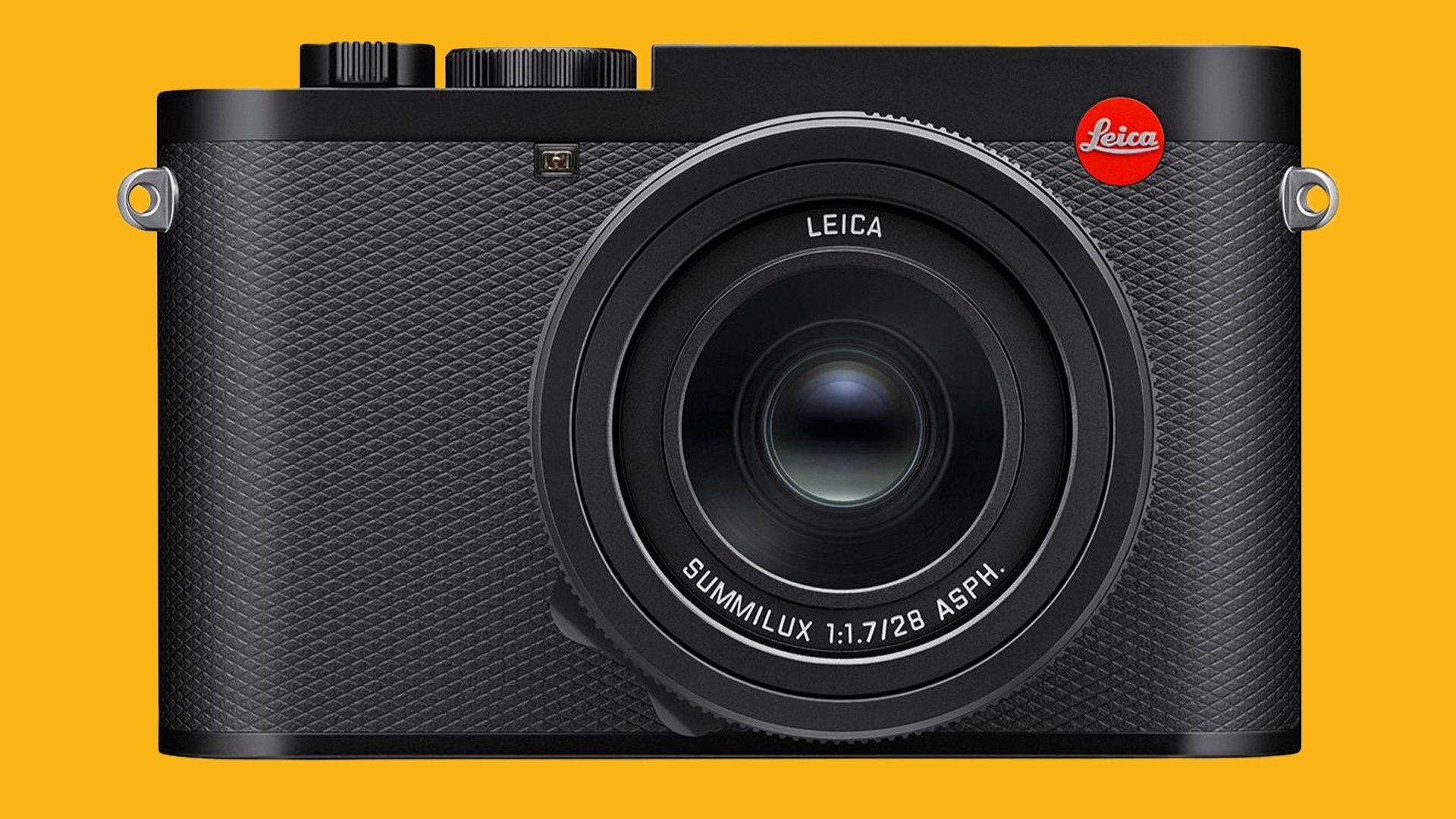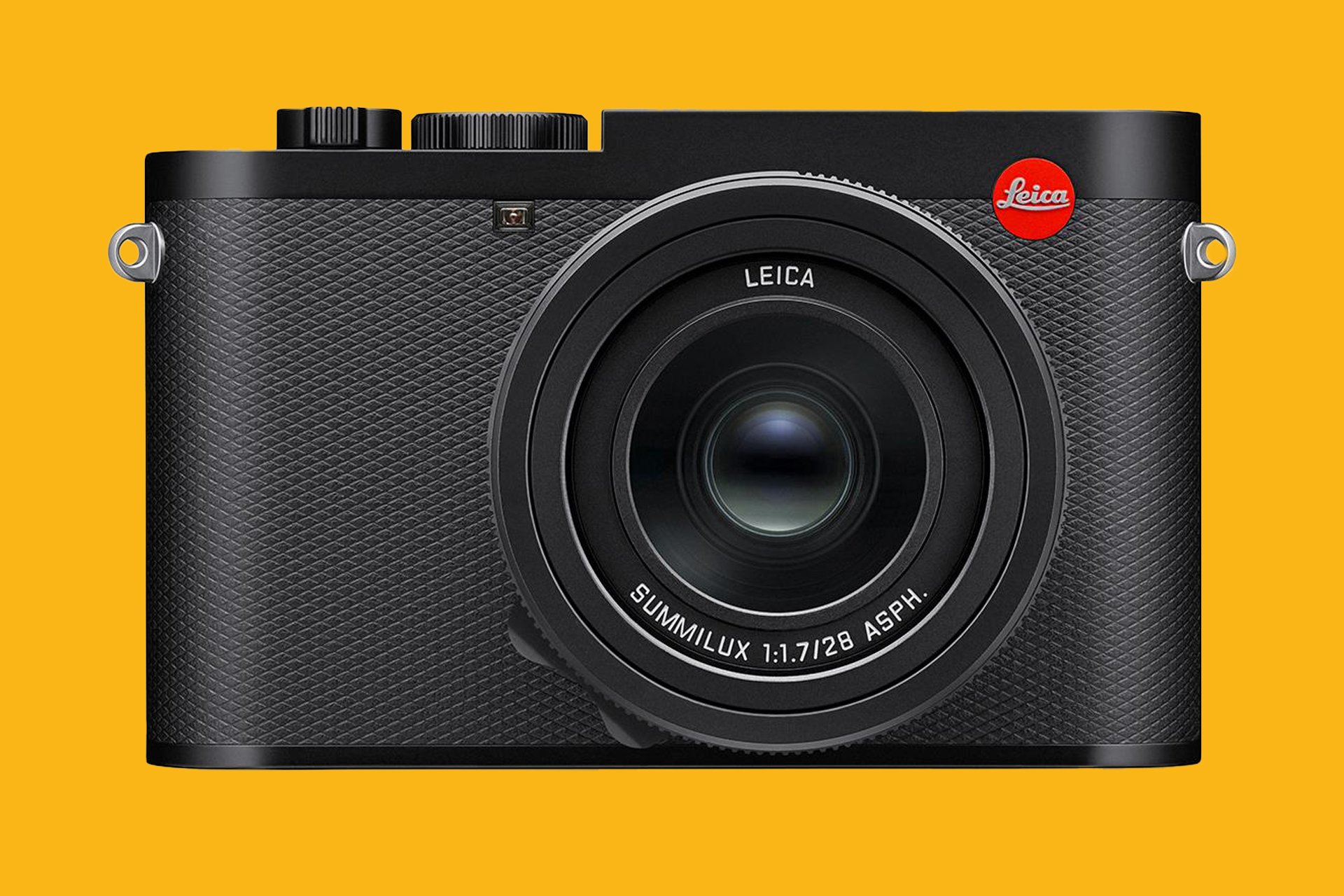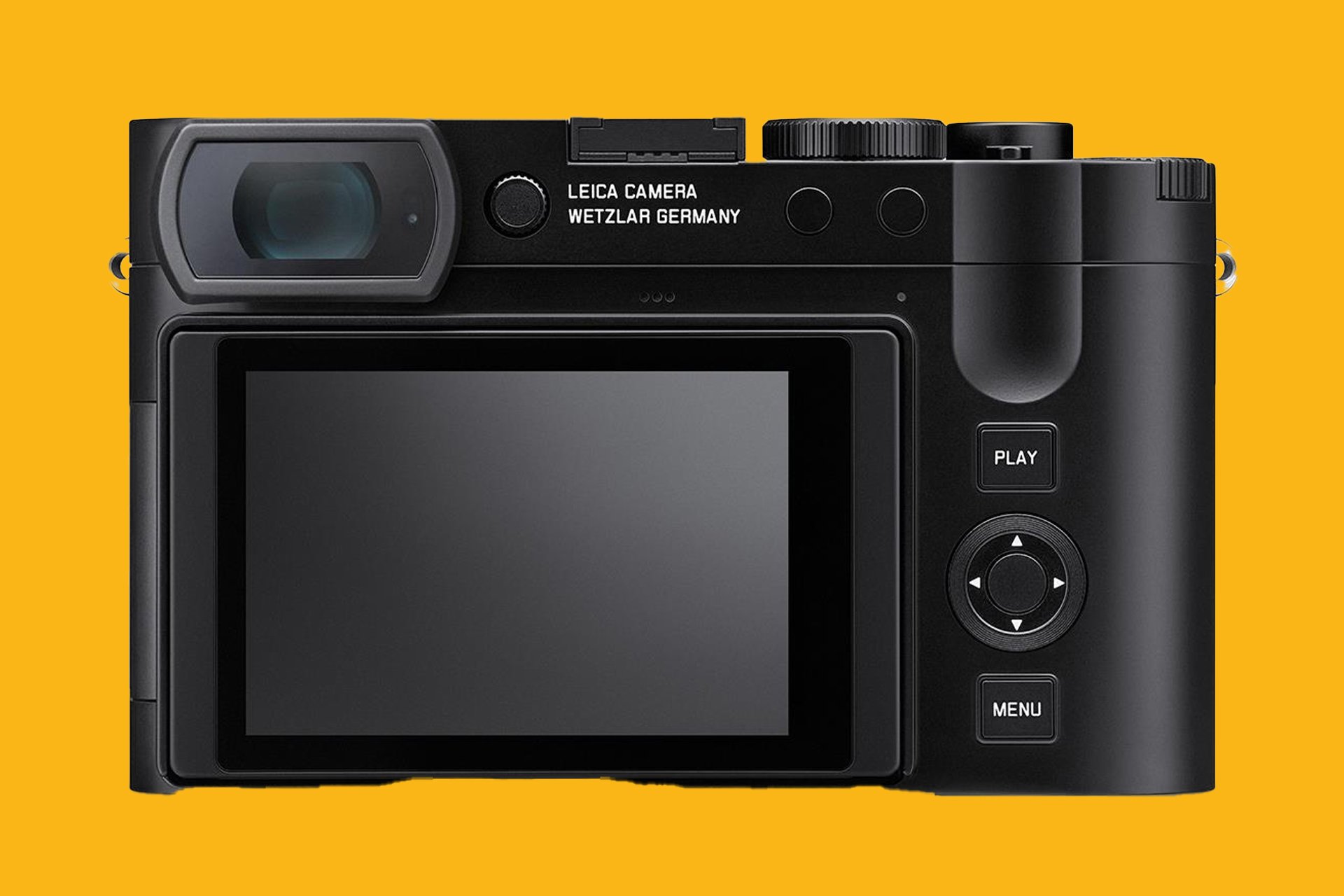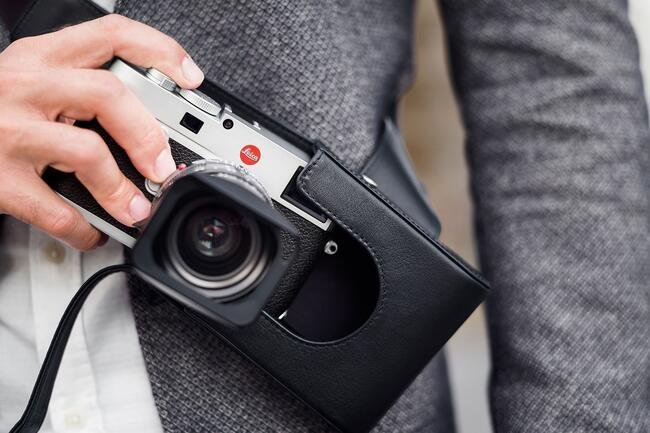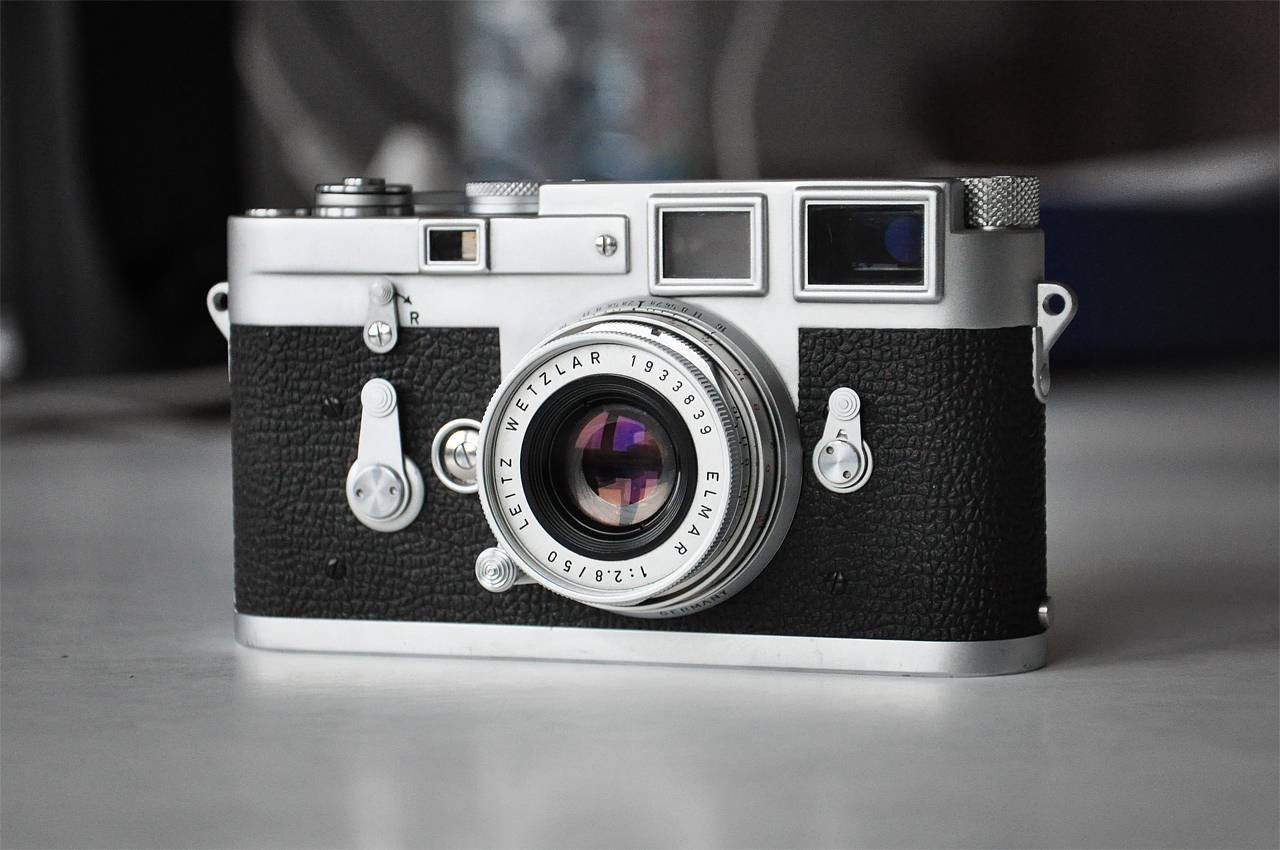Leica Q3: A Game-Changer for the Street Photographer's Toolkit
Leica has always been renowned for producing iconic, precision-engineered cameras. With the release of the Leica Q3, the tradition continues as this gem of a camera has brought forth several pioneering features that pack a punch for street photographers worldwide.
Leica has always been renowned for producing iconic, precision-engineered cameras. With the release of the Leica Q3, the tradition continues as this gem of a camera has brought forth several pioneering features that pack a punch for street photographers worldwide.
At its heart, the Leica Q3 carries an innovative 60MP BSI CMOS Sensor with Triple Resolution Technology, the first of its kind in the Leica Q range. Photographers can choose between 60, 36, or 18 MP resolutions to suit their shooting needs, a flexibility that's very welcome in the dynamic world of street photography. The new sensor technology captures images with superb detail and high dynamic range, perfect for rendering the complexities of urban landscapes and candid human moments.
Leica's new autofocus system introduces a blend of phase detection and high-precision contrast autofocus. As any street photographer will tell you, fast and accurate autofocus is a game-changer when you're trying to capture that fleeting moment amidst the hustle and bustle of city life. The new hybrid autofocus with its intelligent subject recognition ensures that every spontaneous shot you take is sharp, detailed, and vibrant.
Speaking of viewfinders, the Q3 also boasts a new 5.76 MP OLED viewfinder, offering a crisp and clear view of your subject. Together with the new tiltable 3-inch high-resolution touchscreen, it provides even more creative opportunities for unusual angles and perspectives. This is key for street photography, where unique vantage points can add depth and interest to your compositions.
Now, let's talk about the lens. The fast Leica Summilux 28 mm f/1.7 ASPH lens with integrated macro mode allows for superb low-light performance and an immersive depth-of-field control. This lens is truly versatile for street photography, allowing you to capture everything from expansive cityscapes to detailed close-ups. The extended digital zoom, allowing for focal lengths of 28, 35, 50, 75, and even 90 mm, provides an extra level of flexibility for composing your shots on-the-go.
The Leica Q3 also prioritizes connectivity with Bluetooth and Wi-Fi capabilities, featuring a fast transfer speed to the Leica FOTOS app. This is a practical feature for photographers who need to quickly share their images or work on-the-go. Plus, the first-ever wireless charging in a full-frame camera is a welcome addition for the busy photographer constantly on the move.
While the Leica Q3 doesn't come cheap, its high-resolution sensor, fast lens, and upgraded autofocus system make it a worthwhile investment for serious street photographers. It delivers on Leica's promise of uncompromised image quality and exceptional ease of use, all packed in a sleek, timeless design.
In conclusion, the Leica Q3 (check it out on Adorama) is a true evolution in the Leica Q family. With a slew of enhancements over the previous generation and its focus on connectivity and convenience, it's a compelling choice for the modern street photographer. From the fast-paced streets of New York to the vibrant alleys of Tokyo, the Leica Q3 can handle it all with ease and style. Happy shooting!
Leica - Understanding the Product Line
As a symbol of craftsmanship, precision, and a long-standing tradition of excellence, Leica has held a distinguished place in the world of photography. Known for their premium cameras and lenses, Leica is a German brand that has been a key player in the industry for over a century. Its reputation for high-quality, …
As a symbol of craftsmanship, precision, and a long-standing tradition of excellence, Leica has held a distinguished place in the world of photography. Known for their premium cameras and lenses, Leica is a German brand that has been a key player in the industry for over a century. Its reputation for high-quality, durable products with superb optics has made it a coveted brand among photography enthusiasts and professionals alike.
Let’s take a look at the rich product line of Leica. Whether you're a street photographer drawn to the legendary M series or a professional portrait photographer considering the SL system, I hope to illuminate the key features, advantages, and potential disadvantages of Leica's offerings. Let's embark on this journey to unravel the world of Leica.
Leica M Series
Synonymous with street photography, the Leica M series holds a legendary status within the photography community. Since the introduction of the M3 in 1954, this line of rangefinder cameras has been cherished for its compact size (back then), robust build, discreet operation, and notably, the unparalleled optical performance of its M-mount lenses.
The Leica M cameras are renowned for their fully manual controls and minimalistic design that allows photographers to truly focus on the fundamentals of their craft. This gives photographers a unique sense of connection to their subject and their tool, making the shooting experience quite distinctive and enjoyable.
However, it's important to note that the M series might not be for everyone. Its manual focusing system, while offering precision control, can be challenging for beginners or for those accustomed to autofocus systems. Also, the high price point, inherent to Leica's commitment to top-quality materials and craftsmanship, may not fit all budgets. But for those who appreciate the combined beauty of simplicity, mechanical precision, and optical brilliance, the Leica M series remains an unrivaled choice.
Leica SL System
Venturing into the world of mirrorless cameras, Leica introduced the SL system which stands as a testament to the brand's dedication to innovation without compromising on its core values. Equipped with cutting-edge technology and the capacity for superior image quality, the Leica SL system presents a viable option for professionals across various genres of photography.
The SL cameras, like the SL2 and SL2-S, offer the benefits of high-resolution electronic viewfinders, fast autofocus, high burst rates, and 4K video recording. The SL lenses, while maintaining the optical brilliance that Leica is known for, are designed for quick and silent autofocus operation, a feature appreciated in scenarios like event photography or wildlife photography where discretion is key.
However, the SL system, like the M series, carries a premium price tag, reflecting the quality and performance that these cameras and lenses offer. Also, due to the larger sensor size, the SL lenses can be quite large and heavy, which may not be suitable for photographers preferring a lighter kit. Yet for those seeking a modern, feature-rich camera that doesn't compromise on image quality, the Leica SL system might be an excellent choice.
Leica Q Series
Continuing Leica's commitment to high-end imaging technology compacted into manageable sizes, the Leica Q series shines as an exemplar of full-frame compact cameras. With an integrated lens, these cameras, such as the popular Q2 or Q3, offer the convenience of a point-and-shoot camera while boasting high-quality image output that rivals professional systems.
The Q series houses a fast, fixed prime lens which is well-suited for general shooting, street photography, and portraits. The cameras also feature a high-resolution electronic viewfinder, a fast autofocus system, and the ability to shoot high-quality 4K video. Their compact size makes them perfect for photographers who value portability without sacrificing image quality.
Yet, with the Q series, the benefits come with certain limitations. The primary one being the fixed lens, which limits the photographer's versatility in terms of focal length. Also, like most Leica cameras, the Q series demands a considerable investment. Still, for those who seek superior image quality packed into a portable and elegantly designed camera body, the Leica Q series might be the perfect fit.
Leica S System
The Leica S System represents the brand's foray into the world of medium format photography. Combining the handling comfort of a 35mm SLR with the image quality advantages of a larger sensor, this system is designed for professional photographers who demand exceptional resolution and dynamic range.
The S System cameras feature high-resolution sensors, excellent low-light performance, and robust build quality, ensuring the cameras can endure the rigors of professional use. Additionally, Leica offers a range of high-quality lenses specifically designed for the S System, each contributing to the outstanding image quality this series is renowned for.
However, this superior performance comes with potential drawbacks to consider. The S System, like most medium format systems, is quite a bit larger and heavier than 35mm or mirrorless cameras. This could potentially limit their appeal for on-the-go or travel photographers. Furthermore, the high-resolution sensors require substantial storage capacity, and the cameras and lenses carry a hefty price tag. Nonetheless, for professionals and enthusiasts seeking uncompromised image quality and don't mind the larger form factor, the Leica S System may well be worth the investment.
Leica CL and TL Systems
In an industry dominated by full-frame and medium format systems, the Leica CL and TL Systems remind us of the practicality and convenience of APS-C cameras. Compact, yet powerful, these cameras pack a serious punch within their diminutive frames, offering flexibility across a wide range of photographic genres.
The CL System is the embodiment of minimalistic design. Offering a traditional rangefinder-style look, it is equipped with an electronic viewfinder and a unique, user-friendly interface that is synonymous with the Leica brand. The TL System, on the other hand, takes a more modern approach with a sleek unibody design and a touch-based interface, making it appealing to those used to operating smartphones and tablets. Both systems deliver exceptional image quality, fast autofocus, and a high degree of customizability.
However, like any camera system, the CL and TL systems have their potential drawbacks. While the compact size is advantageous for portability, it might not be ideal for those with larger hands or those who prefer a more substantial grip. The lens selection, while offering excellent optical quality, is not as extensive as those for full-frame Leica systems or rival APS-C systems. And lastly, being Leica cameras, they come with a relatively high price tag. Despite these potential downsides, for those who appreciate the brand's commitment to simplicity, design elegance, and image quality, the Leica CL and TL Systems can offer a unique photographic experience.
Leica Compact Cameras
While Leica is often associated with its interchangeable lens systems, the company also offers a range of compact cameras that encapsulate the brand's philosophy of exceptional image quality and intuitive design in a small, travel-friendly package. These come in the form of the D-Lux, V-Lux, and C-Lux series.
The D-Lux series captures Leica's ethos in a pocket-friendly form, with a fast, high-quality zoom lens and a sensor that's larger than those found in many other compact cameras, ensuring impressive image quality. The V-Lux series, on the other hand, is renowned for its incredibly versatile zoom range, from wide-angle to super-telephoto, making it an excellent travel companion or a tool for adventure and wildlife photography. The C-Lux, the smallest in the lineup, embodies style and compactness, offering decent imaging capabilities within an attractive, pocketable body.
Of course, Leica's compact cameras are not without their potential disadvantages. The high price point is a notable factor, given the availability of similar or even more advanced features in lower-priced offerings from other brands. Additionally, while image quality is generally high, the smaller sensors found in these cameras (compared to Leica's full-frame and APS-C offerings) can lead to decreased dynamic range and low-light performance. Regardless, if portability, ease-of-use, and the prestige of the Leica brand are priorities, these compact cameras could very well suit your needs.
Leica Lenses
Leica's lenses are as iconic as the cameras they attach to, if not more so. From the renowned M-mount lenses that have been in production for decades to the contemporary SL and TL lenses for the brand's mirrorless systems, and the S lenses for the medium format system, Leica glass is synonymous with optical excellence.
Starting with the M-mount lenses, these optics are known for their compact design, exceptional build quality, and the 'Leica look' they bring to images. There is a wide range of focal lengths available, from ultra-wide-angle to telephoto, providing M system users with many creative options.
Next up, the SL and TL lenses offer the benefits of autofocus and often weather-sealing. The SL lenses cover full-frame sensors, while the TL lenses are designed for APS-C sensors but can be used on full-frame bodies in an APS-C crop mode.
The S lenses, meanwhile, are designed for Leica's medium format S system. These lenses offer a blend of high resolution, outstanding sharpness, and beautiful out-of-focus areas, making them an excellent choice for any photography where detail is critical, such as portraiture or product photography.
Leica's lens compatibility across different systems is relatively straightforward. M lenses can be used on the SL and CL/TL systems with an adapter, and SL lenses can be used on the CL/TL bodies. However, TL lenses will only cover the APS-C area of an SL sensor.
Lastly, it's worth noting that while Leica lenses are exceptional, they do come with high price tags. There are often cheaper alternatives available from other brands that, while perhaps not matching Leica's image quality and build exactly, may offer a better price-performance ratio for some photographers. But for those seeking the unique rendering and ultimate quality that Leica lenses provide, there's simply no substitute.
Choosing the Right Leica Camera and Lens
Selecting the perfect Leica camera and lens for your needs involves several factors. It's not just about image quality—though that's certainly a significant consideration—but also about how the camera feels in your hand, the photographic genre you're interested in, and, of course, your budget.
For street and documentary photographers who value discretion, the M series is an iconic choice, with its compact size, silent operation, and full-frame sensor. The SL system, on the other hand, is excellent for those who need the versatility of a professional-level mirrorless camera system, with autofocus lenses and high resolution. The Q series provides a compelling combination of a fixed lens and a full-frame sensor in a compact body, making it ideal for travel and everyday photography. If medium format photography is your game, the S system provides unmatched image quality in a relatively compact body.
When it comes to lenses, the focal length and maximum aperture should be the first considerations, according to the genres you're interested in. For example, a wide-angle lens is often used in landscape and architecture, while a fast prime lens with a wide aperture is great for portraiture. The M lenses offer excellent manual focus control for those who enjoy a more traditional way of shooting, while the SL and TL lenses provide the convenience of autofocus.
In addition, consider the lens's compatibility with your chosen camera body, as mentioned earlier in the 'Leica Lenses' section. Remember, while Leica equipment is a significant investment, the joy of using such well-crafted tools and the quality of the images they produce can be well worth it. However, if you're new to Leica or unsure about which system or lens to invest in, renting equipment before buying can be a useful approach. Here are some examples:
For aerial photography, the Leica SL system with its high resolution sensor and fast autofocus lenses like the Leica Vario-Elmarit-SL 24–70 f/2.8 ASPH can be a powerful tool.
In architectural photography, a Leica M system with a wide-angle lens like the Leica Super-Elmar-M 18 mm f/3.8 ASPH can help capture the grandeur of buildings and structures.
Astrophotographers might find the Leica S system to be a good fit. The S3 with its high resolution medium format sensor paired with the Leica Summarit-S 70mm f/2.5 ASPH can provide exquisite detail in astrophotography.
For documentary photography, the stealthy Leica M system with a versatile lens like the Leica Summicron-M 35mm f/2 ASPH is a classic choice.
In fashion photography, the high resolution and versatile Leica SL system paired with the Leica APO-Summicron-SL 75 f/2 ASPH deliver stunning portraits and full body shots.
Fine art photographers might appreciate the Leica Q, with its full-frame sensor and fixed Summilux 28mm f/1.7 ASPH lens for its ability to create unique perspectives in fine art photography.
For food photography, the compact Leica Q series with a full-frame sensor and its bright fixed lens could be a wonderful choice.
Landscape photographers could benefit from the high resolution of the Leica S system and a lens like the Leica Super-Elmar-S 24 mm f/3.5 ASPH for landscape photography.
The Leica CL with the Leica Elmarit-TL 60 mm f/2.8 ASPH, which has a 1:1 macro reproduction ratio, would be an excellent combination for macro photography.
The timeless Leica M system with a lens like the Leica Summilux-M 50mm f/1.4 ASPH is a classic choice for portrait photography.
For sports photography, the Leica SL system with its quick autofocus, paired with a telephoto lens like the Leica APO-Vario-Elmarit-SL 90–280 f/2.8–4, would be a solid choice.
Street photographers might find the stealthy Leica Q to be a good fit with its fixed 28mm lens and silent operation for street photography.
For travel photography, the compact Leica CL with its versatile Leica Vario-Elmar-TL 18–56 mm f/3.5–5.6 could be an ideal travel companion.
The Leica M system with the Leica APO-Summicron-M 90mm f/2 ASPH would be a perfect combination for capturing the timeless moments of a wedding.
Finally, for wildlife photography, the Leica SL system with its quick autofocus, coupled with the Leica APO-Vario-Elmarit-SL 90–280 f/2.8–4, would allow photographers to capture detailed shots from a safe distance.
Conclusion
In the end, choosing the right gear boils down to personal preference and the unique needs of your photographic pursuit. But more than the specs and the features, it's about finding a tool that resonates with your artistic vision. Leica, with its century-long history in the field of photography, offers a diverse product line that caters to various genres and levels of photography. So, we encourage you to explore and experiment until you find that perfect Leica gear that complements your skills, fits your style, and amplifies your storytelling potential. Happy shooting!
You might also be interested in:
